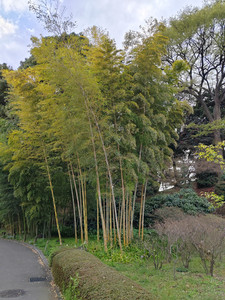East Gardens of the Imperial Palace, Tokyo
- lifeofandra

- Jan 8, 2024
- 3 min read

East Gardens of the Imperial Palace
In the East area of the Imperial Palace grounds, you can find the East Gardens, covering 210.000 square meters. They now occupy the space that once used to be the site of Edo Castle.
They were first open to the public in 1968 and were part of the renovation of the Imperial Palace grounds.

Opening Hours & Admission
Open from 9 am to 4 pm all year round, with longer opening times during the warmer months and the last entry 30 minutes before closing time.
The Gardens are closed on Mondays, Fridays and from the 28th of December to the 1st of January.
Admission is free

Edo Castle unfortunately burnt down in 1657 and has not been rebuilt after but you can still see and even climb up the foundation of the Castle Tower. There is also a scale model (1:30) of the Castle Keep inside one of the buildings/museums.
The entrance gates, walls and some guardhouses still exist, but all main buildings (Castle Keep) have been destroyed.
Entry is possible through the Otemon Gate, Hirakawamon Gate and Kitahane Bashimon Gate.
If entering through the Otemon Gate, the first building, on the right-hand side is the Museum of Imperial Collections (San-no-maru Sho-zo-kan).
If walking straight ahead, Doshin Bansho is the first Guardhouse you will see. It is one of the three surviving guardhouses, dating back to the Tokugawa Shogunate era (1603 - 1867)
Hyakunin Bansho (100-Man Guardhouse) is the next one, as you continue your walk. It is the largest Guardhouse, being 45 meters long. Walking past it, you will get to the Honmaru Entrance.
Past the Honmaru Entrance, you will see the Obansho Guardhouse. It was the last checkpoint for anyone going to the Honmaru / inner area of the castle and it was garrisoned by high-ranking samurai.
Once you walk past the last Guardhouse the space becomes less enclosed and you can have a nice stroll around the Orchard, Wild Grass Island, the Lawn (Honmaru Oshibafu), the Tea Garden and the Rose Garden.
Just past the Rose Garden, you will find the Stone Cellar (Ishimuro).
As you walk past the Stone Celler, to your left you will see the Bamboo Garden and to your right, the Cherry Blossom Island (it has around 30 species of cherry blossom), which, considering I was there in the middle of Sakura Season (March/April), was the most popular spot in the whole garden.
Walking past the cherry blossoms, straight ahead you will see the base of the main tower (Tenshu-dai). You can climb on top of it, and you will have a pretty good view of most of the places I've mentioned so far.

From here, if you walk past the Concert Hall and Music Department Building you will make your way towards the Ninomaro Grove, Ninomaru Garden and Iris Garden.

You can book an hour-long English guided tour which takes place twice a day (at 10 am and 1.30 pm). They now seem to offer walk-in options, but usually, you have to book/register in advance. For more info please see the Imperial Household Agency website.
If you want to visit without a tour and enjoy the walk at your own pace I would recommend setting aside at least 2-3 hours.

Whether you're there because of the beautiful flowers and Cherry Blossoms, the important bits of history found there, or just because you want to spend some time outdoors, I think the East Gardens of the Imperial Palace are highly worth a visit when in Tokyo.
Have you ever been there? If yes, I would love to hear what your favorite part was, in the comments below.
I hope life is treating you well.
Take care.




































